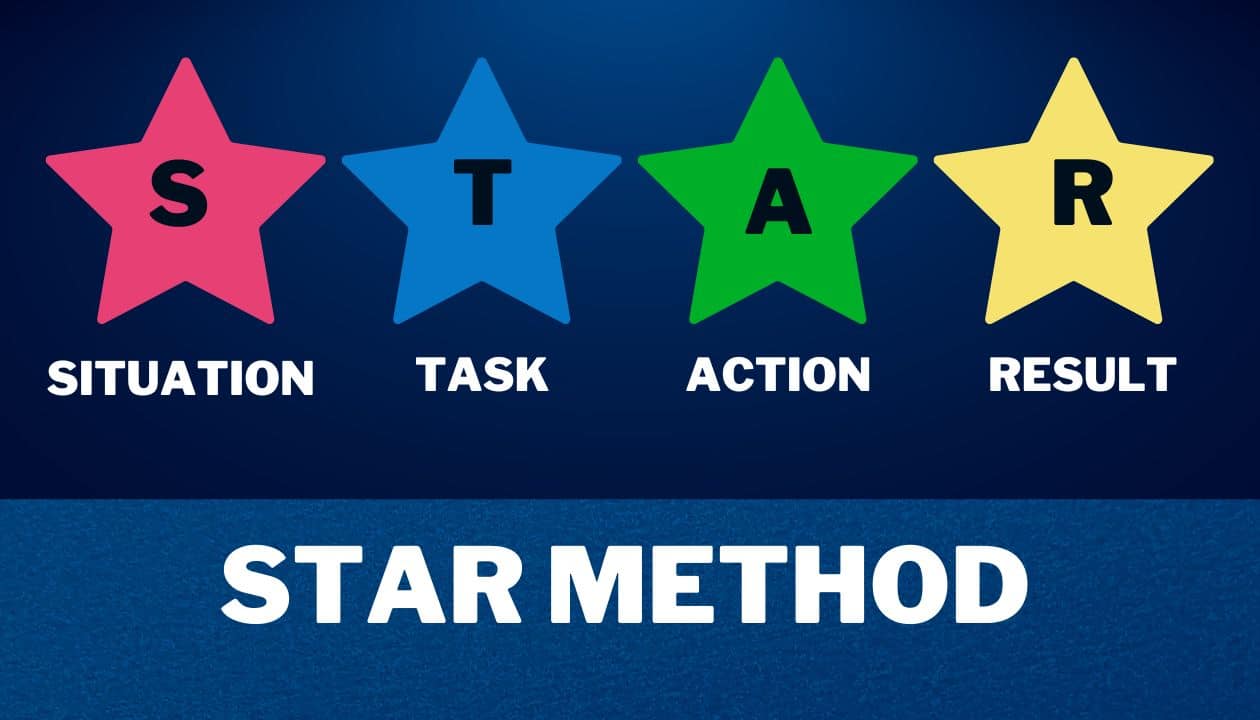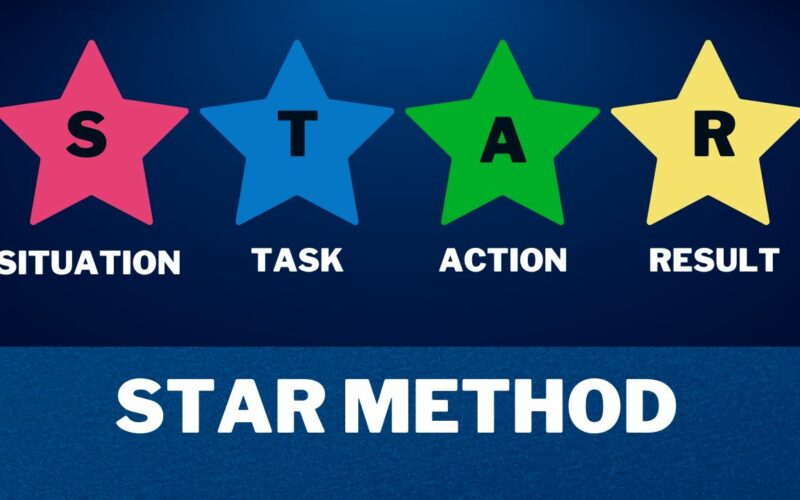The Star method is a technique in which you can answer the interview questions in the most format and behavioural manner. The Star method is mainly used to give an answer to questions which is a real-life situation or when a question is created over any of the past experiences or concerns related to your life.
The questions are easy to recognise, such as the simple patterns of these questions are tell about a time when a particular situation occurs, what must be done when the problem occurs, give an example describing a case, and many more like it.

What is STAR Method?
STAR method stands for Situation, Task, Action, and Result of a particular situation.
1. Situation: A Situation is meant for a particular task which is assigned to you in the interview process for which you have to be answerable. You must behave in a structural manner to answer the task and think logically and rationally about the situation.
The situation varies from job to job and profile to profile, and also it will depend upon your previous work experience or any similar events.
2. Task: A Task is a work which is assigned to you to get a reasonable outcome of a particular work. It could be some tricky questions also from which you have to give a logical answer to validify your point.
3. Action: Action is something to do in a situation with focus and determination. It also includes thinking about taking some necessary actions or steps for the particular scenario.
The action can only be defined for an individual when you represent yourself, not the team. Because in the team or a group, the resulting outcome is only judged.
But in individual actions, every task and development is done by only one person, and the whole process can be considered. Words like I are included in the action.
4. Result: The Result is an outcome of the whole process. It is the end process of the star methodology in which you should take credit for your behaviour in a positive manner and also positively accept the failures too. The essential thing that is judged is how the outcome comes and affects your behaviour in the end.
Let's see the STAR Method Example:
Let us take a model to describe the star methodology briefly. Suppose college newspaper has a downfall in the revenue of advertising and even the contracts which were in the long term bonded were also not renewing.
This is a situation which is assigned to a person, and he might give some ideas to solve this problem and have an increase in the revenue from last year.
The task has been assigned to generate a new idea for a particular situation from which a person might be giving a suggestion or opinion relevant to the situation.
For example, a new promotional packet must be designed compared to the previous year and set up a special training session with the business administrator professors who can teach the students about different strategies for selling the product.
The college will have more advertisers to promote the product to generate extra revenue than before.
Here when a new idea was given to the interview of setting up training sessions then, it came under the action, and the result of the idea of getting more contracts and revenue came under the result session.
How to Relate a Situation with STAR Methodology
To use the star methodology, here are some simple steps which must be followed.
Step 1: The first step is to find a similar example according to the situation that is asked. This step is used to make a frame of an answer to give a relevant answer according to the situation.
The situations or the questions are brainstormed, which must be answered with some logic and in a positive manner.
Step 2: The next step is to set the scene of a story in mind to have a clear picture of the situation from which you can judge the action that must be done by you and the goal which must be achieved at the end of the situation. After that, highlight the task that is given to you with the proper justification of the action or response to the particular task.
Step 3: In the end, it is your (interview attempter) responsibility to clarify the outcome of the action, which is a part of your discussion of the situation. You can also relate the action with any past scenario, and the suggestion can also be some past activities that are done by you at that time.
Some Other Things to Take Care of While Sitting in an Interview:
Apart from the situation and answering to it, a person must be prepared for an interview regarding posture and behaviour.
In terms of posture, a person must know how to enter the room and sit in the correct posture when asked. While sitting, you must not keep the files directly on the desk until it is not requested.
When the interviewer asks you about your resume or another document, then it is only meant to keep your file on the desk and let the documents be read by the interviewer. In terms of behaviour, it is most important to know the way of talking, reacting and being confident with a smile on your face.
A person must have a sweet talk with complete confidence and opposite behaviour of accepting everything which is mentioned in the resume. You must not be a part of any story tell her as it will create an opposing point of you rather than you must be honest to your every answer.
Your resume must be in the proper format. The font size must be equal. The resume must not be colourful and must not consist of any skills or activities that are not relevant to the company's job profile. You must add your skills, projects, subjects, and past experience(if any) to the resume.
Your resume must consist of information about your study background, your contact number, email, social media id (LinkedIn) and address in the top session of the resume.
You must be prepared for the most common questions asked in the interview, such as introducing yourself in which you just had your skills relevant to the companies profile, your negative and positive parts and how you overcome the negative aspects, for example, any past experience and internships if done and are relevant to the company profile must be added into the introduction.
Conclusion:
The article consists of a complete elaboration of the star methodology to use in the interview, how to answer behavioural interview questions with the STAR method, how to fit the questions with star methodologies and some important aspects to prepare for the interview.







